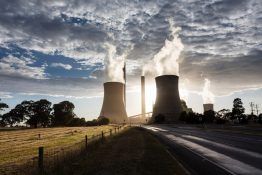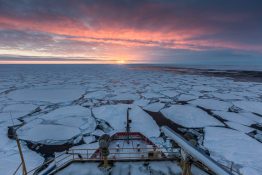Countries around the world pledged in the Paris Agreement to limit warming to 1.5 degrees Celsius, or, at most, 2 degrees Celsius. As emissions rates gradually begin to decline, countries are looking at how many greenhouse gases can still be emitted while remaining below these temperature targets, which are deemed the upper limits to avoid the most catastrophic impacts to the climate system.
Read more at UW News »Diversity, Equity and Inclusion at UW Atmospheric Sciences
The UW Department of Atmospheric Sciences strives to create an inclusive and welcoming environment where students, staff and faculty are supported and set up for success. Department Chair Cecilia Bitz has prioritized Diversity, Equity, and Inclusion (DEI) initiatives, citing her personal work history as a motivator to create an equitable environment. “Diversity is so important to me personally because when I started my career, women were definitely a minority,” she said.
Read more »Joel Thornton named new Chair of the Department of Atmospheric Sciences
The UW College of the Environment is pleased to announce that Professor Joel Thornton has agreed to serve for a five-year term as director of the Department of Atmospheric Sciences, effective July 1, 2022. Thornton is an atmospheric scientist who studies the impacts of human activities on air quality and climate through changes to the atmosphere’s composition and chemistry. His focus is on the processes which regulate the formation and removal of short-lived greenhouse gasses such as methane and ozone, and the formation and growth of airborne particulate matter.
Read more »Ice shards in Antarctic clouds let more solar energy reach Earth’s surface
Clouds come in myriad shapes, sizes and types, which control their effects on climate. New research led by the University of Washington shows that splintering of frozen liquid droplets to form ice shards inside Southern Ocean clouds dramatically affects the clouds’ ability to reflect sunlight back to space. The paper, published March 4 in the open-access journal AGU Advances, shows that including this ice-splintering process improves the ability of high-resolution global models to simulate clouds over the Southern Ocean – and thus the models’ ability to simulate Earth’s climate.
Read more at UW News »Solar energy explains fast yearly retreat of Antarctica’s sea ice
In the Southern Hemisphere, the ice cover around Antarctica gradually expands from March to October each year. During this time the total ice area increases by 6 times to become larger than Russia. The sea ice then retreats at a faster pace, most dramatically around December, when Antarctica experiences constant daylight. New research led by the University of Washington explains why the ice retreats so quickly: Unlike other aspects of its behavior, Antarctic sea ice is just following simple rules of physics.
Read more at UW News »





